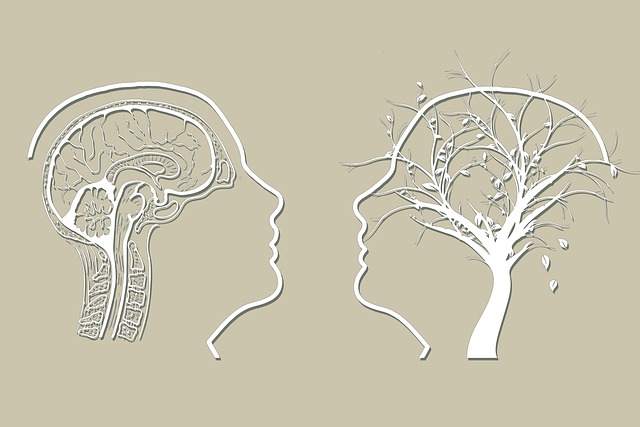Burnout among healthcare providers in Greenwood Village Children Therapy is a growing concern, driven by factors like managing young patients' behaviors, dealing with sensitive issues, and balancing parental expectations. To combat this, the center prioritizes therapists' well-being through strategies like supportive work environments, open communication, stress management resources, and cultural competency training. Self-care techniques, including mindfulness practices, boundary setting, and regular breaks, are encouraged to reduce stress levels and enhance job satisfaction. Open dialogue, collaboration, continuous education, and skill enhancement programs further strengthen the professional community, fostering a healthier work environment and ultimately improving patient care in Greenwood Village.
Healthcare provider burnout is a growing concern, impacting patient care and organizational productivity. This article explores comprehensive strategies to prevent burnout among healthcare professionals, focusing on practices implemented at Greenwood Village Children Therapy. We delve into work-life balance initiatives, self-care techniques, supportive workplace cultures, continuous education, and skill enhancement programs. By examining these approaches, we aim to provide insights that can be adapted across various healthcare settings, fostering healthier and more sustainable professional environments.
- Understanding Burnout Among Healthcare Providers
- Strategies for Work-Life Balance at Greenwood Village Children Therapy
- The Role of Self-Care and Stress Management Techniques
- Fostering a Supportive Professional Environment
- Continuous Education and Skill Enhancement Programs
Understanding Burnout Among Healthcare Providers

Burnout among healthcare providers is a growing concern, especially in highly demanding fields like children’s therapy in Greenwood Village. It’s more than just feeling tired; it’s a state of emotional exhaustion, depersonalization, and reduced personal accomplishment, often stemming from prolonged exposure to stressful work environments. The unique challenges faced by therapists working with young patients, including managing complex behaviors, dealing with sensitive topics, and balancing therapeutic goals with parental expectations, can significantly contribute to burnout over time.
Recognizing the signs of burnout early is crucial for implementing effective burnout prevention strategies for healthcare providers. This includes fostering a supportive work environment, encouraging open communication about workload and well-being, and providing access to resources for stress management and self-esteem improvement. Additionally, regular healthcare provider cultural competency training can enhance job satisfaction by promoting a deeper understanding of diverse patient populations, leading to more fulfilling interactions and reduced feelings of isolation.
Strategies for Work-Life Balance at Greenwood Village Children Therapy

At Greenwood Village Children Therapy, we understand that achieving a healthy work-life balance is essential for our dedicated therapists’ well-being and, in turn, the quality of care they provide. To combat burnout, we’ve implemented several strategies focused on empowering our team to manage their personal and professional lives effectively.
Our approach emphasizes the importance of self-care and includes initiatives such as promoting regular breaks during work hours, encouraging the use of mindfulness meditation techniques for stress relief, and fostering an environment that supports open dialogue about emotional intelligence. Additionally, we recognize the significance of setting clear boundaries between work and personal life. Therapists are encouraged to take regular vacations, put away work-related thoughts during non-work hours, and prioritize quality time with family and friends. These practices create a sustainable work environment, reducing stress levels and enhancing overall job satisfaction at Greenwood Village Children Therapy.
The Role of Self-Care and Stress Management Techniques

Burnout among healthcare providers is a growing concern, but implementing self-care and stress management techniques can be a powerful preventive measure. These strategies empower medical professionals to maintain their well-being and resilience in high-pressure environments, such as Greenwood Village Children Therapy settings. Prioritizing self-care involves setting boundaries, scheduling regular breaks, and engaging in activities that promote relaxation and rejuvenations. Techniques like mindfulness meditation, deep breathing exercises, and yoga can help manage stress, enhance focus, and foster emotional balance.
Compassion cultivation practices have also gained recognition as effective tools for preventing burnout. Encouraging professionals to cultivate compassion towards themselves and their patients can create a healthier work environment. Additionally, risk management planning for mental health professionals is crucial, involving setting realistic goals, seeking support from colleagues or supervisors, and partaking in public awareness campaigns development to destigmatize mental health concerns within the healthcare community.
Fostering a Supportive Professional Environment

Creating a supportive professional environment is a crucial aspect of healthcare provider burnout prevention, especially in fields like children’s therapy in Greenwood Village. This involves cultivating a culture where open communication and collaboration are encouraged. Therapists should feel empowered to share their experiences, challenges, and ideas without fear of judgment, fostering a sense of community within the workplace.
A supportive setting promotes the exchange of coping skills development strategies, as professionals can learn from one another’s unique approaches. Additionally, it strengthens mental health policy analysis and advocacy efforts by encouraging staff to discuss systemic issues that contribute to stress management. This collaborative approach not only improves job satisfaction but also enhances the overall quality of care provided at Greenwood Village Children Therapy.
Continuous Education and Skill Enhancement Programs

Healthcare providers, especially those in specialized fields like Greenwood Village Children Therapy, face unique challenges that can contribute to burnout. Continuous Education and Skill Enhancement Programs are vital tools in mitigating these risks. These programs not only keep professionals updated with the latest research and techniques in mental health awareness but also offer opportunities for emotional well-being promotion techniques through interactive workshops and peer support groups. By participating in such initiatives, healthcare providers can maintain their expertise while fostering positive thinking, which is crucial for both personal satisfaction and patient care.
These continuous learning experiences cater to various aspects of professional growth, from clinical skills to stress management. They create a supportive environment where practitioners can exchange insights, share best practices, and learn new Emotional Well-being Promotion Techniques. By investing in their development, healthcare organizations send a clear message that prioritizing mental health is just as important as treating patients, ultimately fostering a culture that promotes resilience against burnout.
Healthcare provider burnout is a growing concern, but implementing effective strategies can mitigate this issue. From work-life balance initiatives at Greenwood Village Children Therapy to stress management techniques and supportive environments, each aspect plays a crucial role in preventing burnout. Continuous education and skill enhancement programs further empower healthcare professionals, enabling them to deliver quality care while maintaining their well-being. By adopting these strategies, we can foster a healthier and more sustainable professional landscape.











